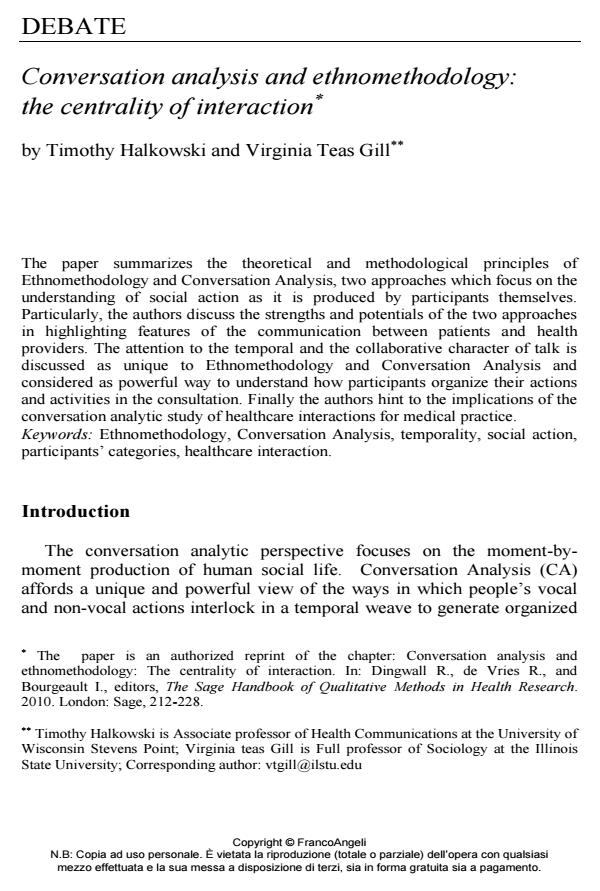Conversation analysis and ethnomethodology: the centrality of interaction
Titolo Rivista SALUTE E SOCIETÀ
Autori/Curatori Timothy Halkowski, Gill Virginia Teas
Anno di pubblicazione 2013 Fascicolo 2013/1EN
Lingua Inglese Numero pagine 22 P. 203-224 Dimensione file 284 KB
DOI 10.3280/SES2013-001015EN
Il DOI è il codice a barre della proprietà intellettuale: per saperne di più
clicca qui
Qui sotto puoi vedere in anteprima la prima pagina di questo articolo.
Se questo articolo ti interessa, lo puoi acquistare (e scaricare in formato pdf) seguendo le facili indicazioni per acquistare il download credit. Acquista Download Credits per scaricare questo Articolo in formato PDF

FrancoAngeli è membro della Publishers International Linking Association, Inc (PILA)associazione indipendente e non profit per facilitare (attraverso i servizi tecnologici implementati da CrossRef.org) l’accesso degli studiosi ai contenuti digitali nelle pubblicazioni professionali e scientifiche
The paper summarizes the theoretical and methodological principles of Ethnomethodology and Conversation Analysis, two approaches which focus on the understanding of social action as it is produced by participants themselves. Particularly, the authors discuss the strengths and potentials of the two approaches in highlighting features of the communication between patients and health providers. The attention to the temporal and the collaborative character of talk is discussed as unique to Ethnomethodology and Conversation Analysis and considered as powerful way to understand how participants organize their actions and activities in the consultation. Finally the authors hint to the implications of the conversation analytic study of healthcare interactions for medical practice.
Parole chiave:Ethnomethodology, Conversation Analysis, temporality, social action, participants’ categories, healthcare interaction
Timothy Halkowski, Gill Virginia Teas, Conversation analysis and ethnomethodology: the centrality of interaction in "SALUTE E SOCIETÀ" 1EN/2013, pp 203-224, DOI: 10.3280/SES2013-001015EN